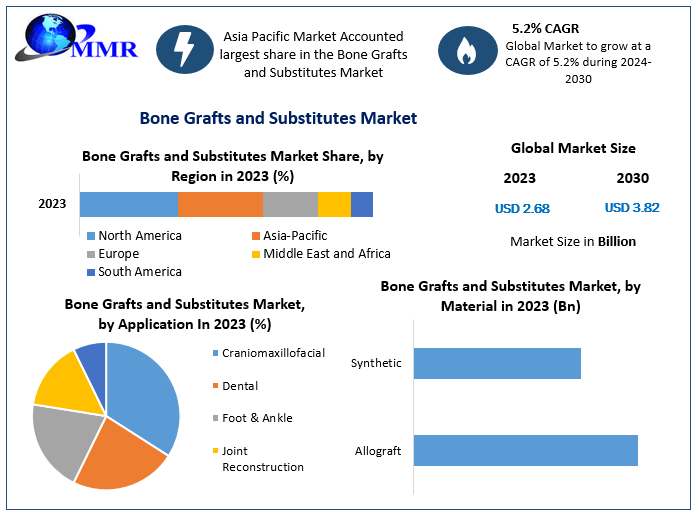Bone Cancer Treatment Market is Anticipated to Register 6.18% CAGR through 2031
The Bone Cancer Treatment Market report encompasses a gamut of drivers and inhibitors of the market that are analyzed using both quantitative as well as qualitative approach to provide precise insights and information to users and readers alike about the ABC industry. The statistical data offered in this market research report is symbolized using graphs that make the understanding of figures and facts easier. The report sheds light on the commerce strategies for all size businesses- small, medium and large. The estimations and analysis is performed through the report facilitates to have an idea regarding the CAGR value, export, import, revenue, promotions, marketing, M&A and its impact on sales, developments, marketing strategy, joint ventures, future products, and product launches.
The report offers a detailed overview of the market structure coupled with the evaluations of diverse segments as well as market sub-segments. Through the high-tech and accurate information provided in the report, businesses can familiarize about the various forms of consumers, their specific preferences and needs, their buying intentions, their perspectives regarding the product, their response to a specific product, and their wide ranging tastes regarding the particular product that exists in the market at present. The Bone Cancer Treatment market report characterizes the business strategies of businesses of all sizes. For a better understanding of competitive landscape and the market as a whole, the winning market report serves detailed data and manifold parameters.
Key Players
The global Bone Cancer Treatment has been comprehensively analyzed and the different companies that occupy a large percentage of the market share in the regions mentioned have been listed out in the report. Industry trends that are popular and are causing a resurgence in the market growth are identified. A strategic profile of the companies is also carried out to identify the various subsidiaries that they own in the different regions and who are responsible for daily operations in these regions.
Major Companies Included in Report are-
• Amgen
• Baxter
• Bayer AG
• Hikma Pharmaceuticals
• Johnson & Johnson
• Novartis AG
• Pfizer Inc.
• Recordati Group
• Takeda Pharmaceutical Company
• Debiopharm
• Eli Lilly and Company
To Check the Complete Table Of Contents, click here @
https://www.datalibraryresearch.com/market-analysis/bone-cancer-treatment-market-5272
Research objectives
• To understand the structure of Bone Cancer Treatment by identifying its various sub segments.
• Focuses on the key global Bone Cancer Treatment manufacturers, to define, describe and analyse the sales volume, value, market share, market competition landscape, SWOT analysis and development plans in next few years.
• To analyse the Bone Cancer Treatment with respect to individual growth trends, future prospects, and their contribution to the total market.
• To share detailed information about the key factors influencing the growth of the market (growth potential, opportunities, drivers, industry-specific challenges and risks).
• To project the consumption of Immigration Consulting Services sub markets, with respect to key regions (along with their respective key countries).
• To analyse competitive developments such as expansions, agreements, new product launches, and acquisitions in the market.
• To strategically profile the key players and comprehensively analyse their growth strategies.
Market segmentation
Global Bone Cancer Treatment Market is split by Type and by Application. For the period 2018–2030, the growth among segments provide accurate calculations and forecasts for sales by Type and by Application in terms of volume and value. This analysis can help you expand your business by targeting qualified niche markets.
Research Methodology:
Our market forecasting is based on a market model derived from market connectivity, dynamics, and identified influential factors around which assumptions about the market are made. These assumptions are enlightened by fact-bases, put by primary and secondary research instruments, regressive analysis and an extensive connect with industry people. Market forecasting derived from in-depth understanding attained from future market spending patterns provides quantified insight to support your decision-making process. The interview is recorded, and the information gathered in put on the drawing board with the information collected through secondary research.
The report provides insights on the following pointers:
• Market Penetration: Provides comprehensive information on Bone Cancer Treatment offered by the key players in the Global Bone Cancer Treatment
• Product Development & Innovation: Provides intelligent insights on future technologies, R&D activities, and new product developments in the Global Bone Cancer Treatment
• Market Development: Provides in-depth information about lucrative emerging markets and analyses the markets for the Global Bone Cancer Treatment
• Market Diversification: Provides detailed information about new products launches, untapped geographies, recent developments, and investments in the Global Bone Cancer Treatment
• Competitive Assessment & Intelligence: Provides an exhaustive assessment of market shares, strategies, products, and manufacturing capabilities of the leading players in the Global Bone Cancer Treatment
The report answers key questions such as:
• What will the market size be in 2030 and what will the growth rate be?
• What are the key market trends?
• What is driving this market?
• What are the challenges to market growth?
• Who are the key vendors in this market space?
• What are the market opportunities and threats faced by the key vendors?
• What are the strengths and weaknesses of the key vendors?
Table of Contents: Bone Cancer Treatment
Chapter 1: Overview of Bone Cancer Treatment
Chapter 2: Global Market Status and Forecast by Regions
Chapter 3: Global Market Status and Forecast by Types
Chapter 4: Global Market Status and Forecast by Downstream Industry
Chapter 5: Market Driving Factor Analysis
Chapter 6: Market Competition Status by Major Manufacturers
Chapter 7: Major Manufacturers Introduction and Market Data
Chapter 8: Upstream and Downstream Market Analysis
Chapter 9: Cost and Gross Margin Analysis
Chapter 10: Marketing Status Analysis
Chapter 11: Market Report Conclusion
Chapter 12: Research Methodology and Reference
Browse More Reports
Ovarian Cancer Drug Market
Ear Infection Treatment Market
Membrane Water Treatment Market
Cervical Cancer Diagnostic Market
About Us: Data Library Research is a market research company that helps to find its passion for helping brands grow, discover, and transform. We want our clients to make wholehearted and long-term business decisions. Data Library Research is committed to delivering its output from market research studies that are based on fact-based and relevant research across the globe. We offer premier market research services that cover all industries verticals, including agro-space defense, agriculture, and food, automotive, basic material, consumer, energy, life science, manufacturing, service, telecom, education, security, technology. We make sure that we make an honest attempt to provide clients an objective strategic insight, which will ultimately result in excellent outcomes.
Contact Us: Rohit Shrivas,
Senior Manager International Sales and Marketing
Data Library Research
info@datalibraryresearch.com
Ph: +1 (480) 529-6635 (US)
Follow Us:
LINKEDIN | FACEBOOK | TWITTER | YOUTUBE
Bone Cancer Treatment Market is Anticipated to Register 6.18% CAGR through 2031
The Bone Cancer Treatment Market report encompasses a gamut of drivers and inhibitors of the market that are analyzed using both quantitative as well as qualitative approach to provide precise insights and information to users and readers alike about the ABC industry. The statistical data offered in this market research report is symbolized using graphs that make the understanding of figures and facts easier. The report sheds light on the commerce strategies for all size businesses- small, medium and large. The estimations and analysis is performed through the report facilitates to have an idea regarding the CAGR value, export, import, revenue, promotions, marketing, M&A and its impact on sales, developments, marketing strategy, joint ventures, future products, and product launches.
The report offers a detailed overview of the market structure coupled with the evaluations of diverse segments as well as market sub-segments. Through the high-tech and accurate information provided in the report, businesses can familiarize about the various forms of consumers, their specific preferences and needs, their buying intentions, their perspectives regarding the product, their response to a specific product, and their wide ranging tastes regarding the particular product that exists in the market at present. The Bone Cancer Treatment market report characterizes the business strategies of businesses of all sizes. For a better understanding of competitive landscape and the market as a whole, the winning market report serves detailed data and manifold parameters.
Key Players
The global Bone Cancer Treatment has been comprehensively analyzed and the different companies that occupy a large percentage of the market share in the regions mentioned have been listed out in the report. Industry trends that are popular and are causing a resurgence in the market growth are identified. A strategic profile of the companies is also carried out to identify the various subsidiaries that they own in the different regions and who are responsible for daily operations in these regions.
Major Companies Included in Report are-
• Amgen
• Baxter
• Bayer AG
• Hikma Pharmaceuticals
• Johnson & Johnson
• Novartis AG
• Pfizer Inc.
• Recordati Group
• Takeda Pharmaceutical Company
• Debiopharm
• Eli Lilly and Company
To Check the Complete Table Of Contents, click here @ https://www.datalibraryresearch.com/market-analysis/bone-cancer-treatment-market-5272
Research objectives
• To understand the structure of Bone Cancer Treatment by identifying its various sub segments.
• Focuses on the key global Bone Cancer Treatment manufacturers, to define, describe and analyse the sales volume, value, market share, market competition landscape, SWOT analysis and development plans in next few years.
• To analyse the Bone Cancer Treatment with respect to individual growth trends, future prospects, and their contribution to the total market.
• To share detailed information about the key factors influencing the growth of the market (growth potential, opportunities, drivers, industry-specific challenges and risks).
• To project the consumption of Immigration Consulting Services sub markets, with respect to key regions (along with their respective key countries).
• To analyse competitive developments such as expansions, agreements, new product launches, and acquisitions in the market.
• To strategically profile the key players and comprehensively analyse their growth strategies.
Market segmentation
Global Bone Cancer Treatment Market is split by Type and by Application. For the period 2018–2030, the growth among segments provide accurate calculations and forecasts for sales by Type and by Application in terms of volume and value. This analysis can help you expand your business by targeting qualified niche markets.
Research Methodology:
Our market forecasting is based on a market model derived from market connectivity, dynamics, and identified influential factors around which assumptions about the market are made. These assumptions are enlightened by fact-bases, put by primary and secondary research instruments, regressive analysis and an extensive connect with industry people. Market forecasting derived from in-depth understanding attained from future market spending patterns provides quantified insight to support your decision-making process. The interview is recorded, and the information gathered in put on the drawing board with the information collected through secondary research.
The report provides insights on the following pointers:
• Market Penetration: Provides comprehensive information on Bone Cancer Treatment offered by the key players in the Global Bone Cancer Treatment
• Product Development & Innovation: Provides intelligent insights on future technologies, R&D activities, and new product developments in the Global Bone Cancer Treatment
• Market Development: Provides in-depth information about lucrative emerging markets and analyses the markets for the Global Bone Cancer Treatment
• Market Diversification: Provides detailed information about new products launches, untapped geographies, recent developments, and investments in the Global Bone Cancer Treatment
• Competitive Assessment & Intelligence: Provides an exhaustive assessment of market shares, strategies, products, and manufacturing capabilities of the leading players in the Global Bone Cancer Treatment
The report answers key questions such as:
• What will the market size be in 2030 and what will the growth rate be?
• What are the key market trends?
• What is driving this market?
• What are the challenges to market growth?
• Who are the key vendors in this market space?
• What are the market opportunities and threats faced by the key vendors?
• What are the strengths and weaknesses of the key vendors?
Table of Contents: Bone Cancer Treatment
Chapter 1: Overview of Bone Cancer Treatment
Chapter 2: Global Market Status and Forecast by Regions
Chapter 3: Global Market Status and Forecast by Types
Chapter 4: Global Market Status and Forecast by Downstream Industry
Chapter 5: Market Driving Factor Analysis
Chapter 6: Market Competition Status by Major Manufacturers
Chapter 7: Major Manufacturers Introduction and Market Data
Chapter 8: Upstream and Downstream Market Analysis
Chapter 9: Cost and Gross Margin Analysis
Chapter 10: Marketing Status Analysis
Chapter 11: Market Report Conclusion
Chapter 12: Research Methodology and Reference
Browse More Reports
Ovarian Cancer Drug Market
Ear Infection Treatment Market
Membrane Water Treatment Market
Cervical Cancer Diagnostic Market
About Us: Data Library Research is a market research company that helps to find its passion for helping brands grow, discover, and transform. We want our clients to make wholehearted and long-term business decisions. Data Library Research is committed to delivering its output from market research studies that are based on fact-based and relevant research across the globe. We offer premier market research services that cover all industries verticals, including agro-space defense, agriculture, and food, automotive, basic material, consumer, energy, life science, manufacturing, service, telecom, education, security, technology. We make sure that we make an honest attempt to provide clients an objective strategic insight, which will ultimately result in excellent outcomes.
Contact Us: Rohit Shrivas,
Senior Manager International Sales and Marketing
Data Library Research
info@datalibraryresearch.com
Ph: +1 (480) 529-6635 (US)
Follow Us:
LINKEDIN | FACEBOOK | TWITTER | YOUTUBE






